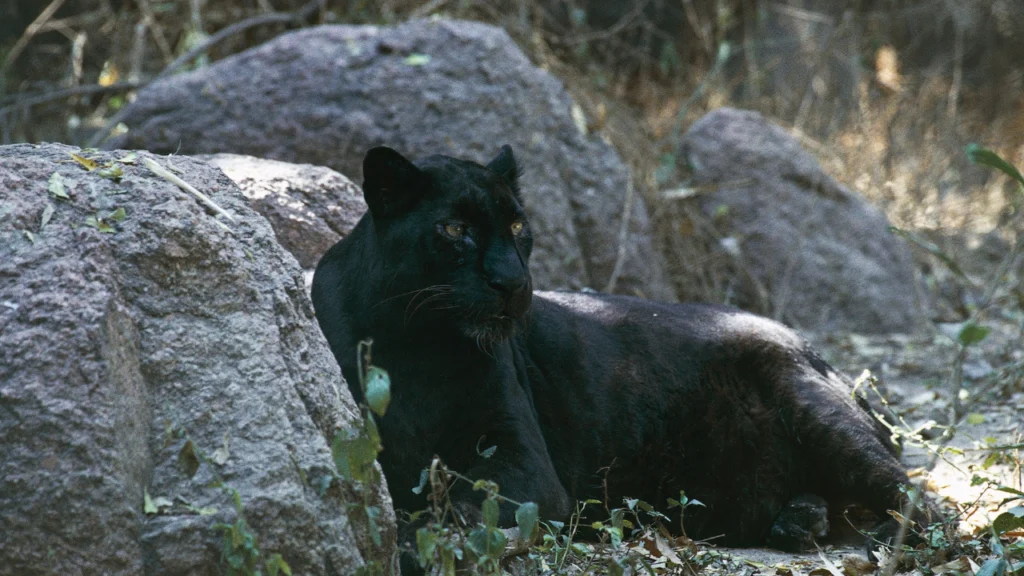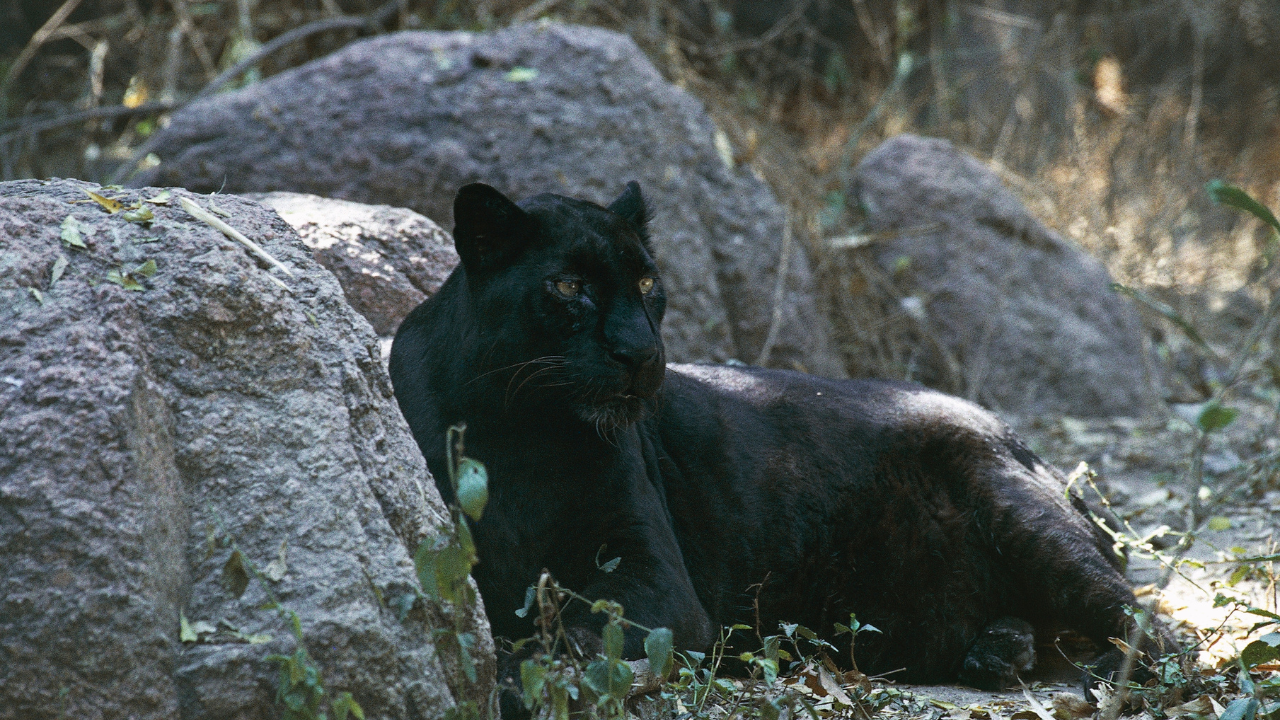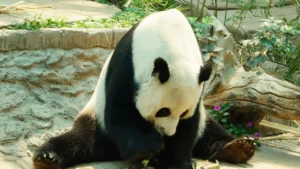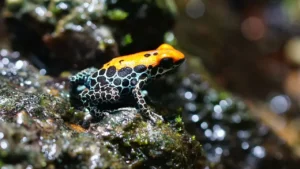Table of Contents
In the dense jungles and shadowy depths of Central and South America, a creature of legend prowls with silent grace and predatory prowess: the black panther the animal. With its sleek ebony coat and piercing golden eyes, the Jaguar commands both fear and fascination as one of the most elusive and enigmatic big cats on the planet. In 2024, as our understanding of wildlife deepens and conservation efforts intensify, the Jaguar stands as a symbol of mystery, resilience, and the untamed beauty of the natural world. In this comprehensive exploration, we delve into the captivating world of the black panther, unraveling its secrets, celebrating its uniqueness, and advocating for its protection in an ever-changing world.
Introduction to the Black Panther The Animal: Myth and Reality
The term “black panther the animal” is commonly used to refer to any melanistic big cat, including leopards, jaguars, and cougars, that exhibits a dark, blackish coat coloration due to an excess of melanin pigment. In the case of the black panther the animal found in the Americas, it is most often associated with the melanistic form of the jaguar (Panthera onca), the largest cat species in the Americas. Despite its name, the black panther is not a separate species but rather a color variant of the jaguar, distinguished by its striking black coat and powerful presence in its native habitats.
While sightings of Jaguars are relatively rare due to their elusive nature and nocturnal habits, they hold a special place in the folklore, mythology, and cultural traditions of indigenous peoples throughout the Americas.
Physical Characteristics: Anatomy of a Shadowy Predator

The black panther the animal, like its non-melanistic counterparts, possesses a lithe and muscular body adapted for stealth, speed, and agility in its jungle habitat. It has a broad, rounded head with powerful jaws, sharp teeth, and keen senses that enable it to hunt and navigate its environment with precision. The most distinguishing feature of the Jaguar is, of course, its coat coloration, which ranges from a deep, velvety black to a dark charcoal gray.
This melanistic coloration is the result of a genetic mutation that causes an overproduction of melanin pigment in the skin and fur, resulting in the characteristic black coloration. Despite its dark appearance, the Jaguar’s coat may still retain faint markings or spots, particularly visible in certain lighting conditions or close examination.
Habitat and Distribution: The Shadowy Realms of the Jungle
Black panthers are primarily found in dense tropical rainforests, swamps, and wetlands throughout Central and South America, where they inhabit a variety of ecosystems ranging from lowland forests to mountainous terrain. They are most commonly encountered in countries such as Brazil, Peru, Ecuador, and Colombia, where suitable habitat and prey populations support viable populations of The black panther the animal, both melanistic and non-melanistic. Jaguars are highly adaptable creatures, capable of thriving in a wide range of environments, from dense jungles to open grasslands, provided they have access to sufficient cover, water, and prey. Despite their extensive range, black panthers face increasing threats from habitat loss, fragmentation, poaching, and human-wildlife conflict, which jeopardize their long-term survival and well-being.
Behavior and Ecology: Shadows of the Night
Black panther the animal is solitary and elusive creatures, preferring to avoid human contact and maintain a low profile in their jungle habitats. They are primarily nocturnal hunters, with most activity occurring under the cover of darkness when prey species are most active.Jaguars are apex predators, occupying the top of the food chain and playing a crucial role in regulating prey populations and maintaining ecosystem balance.
They are highly efficient hunters, using stealth, ambush tactics, and sheer strength to overpower and subdue prey, which may include deer, peccaries, capybaras, and smaller mammals. Jaguars are also known to hunt smaller prey such as rodents, birds, and reptiles, as well as occasional livestock in areas where their ranges overlap with human settlements.
Reproduction and Life Cycle: Guardians of the Future
Like all jaguars, black panthers reproduce via internal fertilization, with mating typically occurring between male and female individuals during the breeding season. Female Jaguars give birth to one to four cubs after a gestation period of approximately three to four months, with births typically occurring in secluded dens hidden deep within the jungle. Jaguar cubs are born blind, helpless, and entirely dependent on their mother for care and protection, remaining with her in the den for the first few months of life. As they grow and develop, Jaguar cubs learn essential hunting and survival skills from their mother, gradually gaining independence and venturing out into the surrounding forest to explore and hunt on their own.
Conservation Status: Protecting the Shadows of the Jungle
Black panther the animal, like all jaguars, are classified as near-threatened by the International Union for Conservation of Nature (IUCN), with populations declining due to habitat loss, fragmentation, poaching, and human-wildlife conflict. In response to these threats, conservation organizations, government agencies, and local communities are working tirelessly to protect and conserve Jaguar populations through habitat preservation, anti-poaching measures, and public education initiatives. By raising awareness of the importance of Jaguars to jungle ecosystems and implementing measures to mitigate human impacts, we can ensure a brighter future for these majestic creatures and the forests they call home.
Cultural Significance: Jaguars in Mythology and Folklore
Black panthers have long held a prominent place in the mythology, folklore, and cultural traditions of indigenous peoples throughout the Americas. Revered as symbols of strength, stealth, and spiritual power, black panthers are often depicted in stories, songs, and rituals as guardians of the forest and protectors of the natural world. In many indigenous cultures, Jaguars are regarded as sacred beings, with special significance in rituals and ceremonies that honor the spirits of the jungle. Their image appears in traditional artwork, carvings, and textiles, serving as a reminder of the deep connection between humans and the natural world and the importance of living in harmony with the land.
Encounters in the Wild: Experiences and Insights from Observers
For those fortunate enough to encounter a black panther the animal in the wild, the experience is often one of awe, wonder, and reverence. Whether glimpsed from a distance as it prowls through the undergrowth or observed up close in protected reserves and sanctuaries, the sight of a Jaguar in its natural habitat is a rare and unforgettable privilege. Wildlife enthusiasts, researchers, and photographers devote countless hours to studying and documenting Jaguar behavior, gathering valuable data on their ecology, behavior, and conservation status. Through their efforts, we gain insights into the mysteries of the jungle and deepen our appreciation for the beauty and diversity of wildlife in its natural habitat.
Encounters in the Wild: Experiences and Insights from Observers
For those fortunate enough to encounter a black panther the animal in the wild, the experience is often one of awe, wonder, and reverence. Whether glimpsed from a distance as it prowls through the undergrowth or observed up close in protected reserves and sanctuaries, the sight of a black panther in its natural habitat is a rare and unforgettable privilege. Wildlife enthusiasts, researchers, and photographers devote countless hours to studying and documenting Jaguar behavior, gathering valuable data on their ecology, behavior, and conservation status. Through their efforts, we gain insights into the mysteries of the jungle and deepen our appreciation for the beauty and diversity of wildlife in its natural habitat.
Conclusion: Shadows of the Jungle
In conclusion, the Jaguar is more than just a symbol of mystery and intrigue; it is a vital component of the delicate balance of jungle ecosystems, a guardian of the forest, and a testament to the resilience and adaptability of nature.
As we continue to explore and appreciate the wonders of the natural world, let us remember the importance of protecting and conserving species like the black panther the animal, whose survival depends on our collective efforts. By working together to address the threats facing Jaguar populations and their habitats, we can ensure a brighter future for these majestic creatures and the ecosystems they inhabit. Whether prowling through the shadows of the jungle or inspiring awe in people around the world, the Jaguar serves as a reminder of the beauty and mystery of the natural world and the need to preserve it for future generations.







